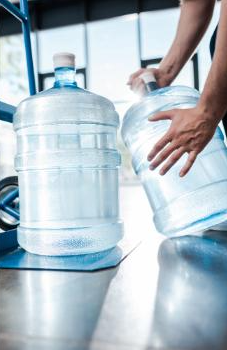How does a carbon filter work?
Activated carbon is a type of filter that removes contaminants in water and air. It is used in many different applications, including as a filter for drinking water, in air purifiers, and as a cigarette smoke filter. It can also be used for industrial gas processing and to recover precious metals such as gold.
(Looking for an “Emergency water delivery” Contact us today!)

What Does a Carbon Filter Do?
An activated carbon filter is a type of water or air filter that is made of granular, powdered, or extruded carbon. These filters have been treated with a chemical process that creates a high surface area, which allows them to adsorb more contaminants than traditional carbon. The extra surface area makes the filter more effective at removing harmful pollutants and allergens.
The adsorption process works because chemicals and other substances in the water or air are attracted to the carbon, like iron filings. If the fluid passes through the activated carbon at a slow rate, it can be allowed to soak into the carbon for longer periods of time. This process can make the carbon more effective at removing harmful contaminants, which results in cleaner water or more healthy air.
Depending on the type of carbon filter, the amount of activated carbon may vary. Some filters may only use a few pounds of carbon, which won’t be as effective at removing contaminants as others.
A good activated carbon filter uses at least five pounds of carbon, which is a good rule of thumb. A higher amount will be more effective at removing more contaminants, but the downside is that it may need to be replaced more frequently as it becomes saturated with carbon.
How Does a Carbon Filter Get Started?
A carbon filter begins by injecting heat or steam to increase the carbon’s surface area. This opens up more pores, allowing the carbon to trap a wider range of contaminants and odors. Activated carbon is often used in water filtering as well as in industrial gas processing, for example, to eliminate siloxanes and hydrogen sulfide from biogas.
There are different types of activated carbon, such as granular activated carbon (GAC), radial carbon filters, and carbon block filters. Some have loose granules that allow water to flow through while others contain compressed pieces of carbon that create a tighter seal.
GAC filters typically have a higher adsorption capacity than other types of carbon, and they are usually used for removing chlorine and chloramines. Other filters, such as radial carbon filters, can be used for a variety of other contaminants and odors.
Some of the most common contaminants that carbon filters remove are:
What Does a Carbon Filter Remove from Water?
Activated carbon is an excellent choice for removing chlorine, chlorine by-products, and other unwanted chemicals from your drinking water. Premium-activated carbon filters can remove up to 95% of the chlorine in your tap water.
Chlorine is a popular disinfectant in the U.S. and is found in most public water supplies. It can kill bacteria and other water-borne pathogens that cause unpleasant odors and tastes. However, chlorine can also have harmful health effects.

